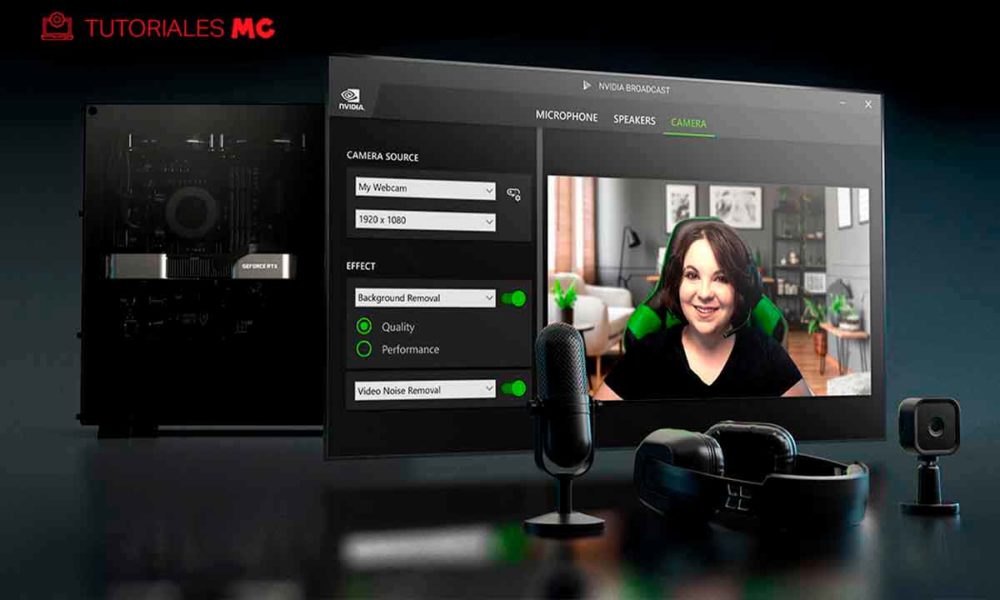Practical: NVIDIA Broadcast with OBS Studio
As you will surely remember, a few weeks ago we told you about NVIDIA Broadcast, orAn application designed by NVIDIA to improve the quality of image and sound captured by our system, and whose output can be used by any application that allows selecting audio and video sources. For this purpose, it takes advantage of the processing capacity of the GeForce graphics cards of the RTX 20 and RTX 30 series. And I can say, after having tried it for several weeks, that I am very pleasantly surprised, even more so if we take into account that it is a free software.
Setting up NVIDIA Broadcast is pretty straightforward, but there are a few things to keep in mind. And the same happens with the applications from which we want to use the image and sound. As an example, let’s walk through initial setup of NVIDIA Broadcast, then configure the sources in OBS to use the image and sound processed by NVIDIA software.
If you still do not have it, obviously what you will have to do is access its website, download NVIDIA Broadcast and install it following the instructions that the wizard will give you. The process does not have any complications, so no indications are necessary in this regard. Once it is available on your PC, access it so that its main interface is displayed, which you normally won’t see because the program is usually kept minimized:
with a first glance You will have already deduced that you have to choose the audio and video sources of NVIDIA Broadcast, as well as the output you want to use. And keep in mind that, in this last point, this setting will affect how you hear all the sound from your PC whenever the program is open. Therefore, the first thing you should do is go to the Speakers section, select an audio output and use the audio sample that you can see in the central part of the window to verify that you can hear the PC’s audio output correctly.
When that’s done, it’s time to set up picture, and also sound if you want to use NVIDIA Broadcast’s “cleanup” filters. As you have done with the output, go to both sections and choose their origins. With the microphone selected, use the controls to record a sample and listen to it to confirm that it is recording correctly.
With the camera, checking is easier, you just have to choose the correct source, and automatically the image that the camera is capturing will be shown on the screen:
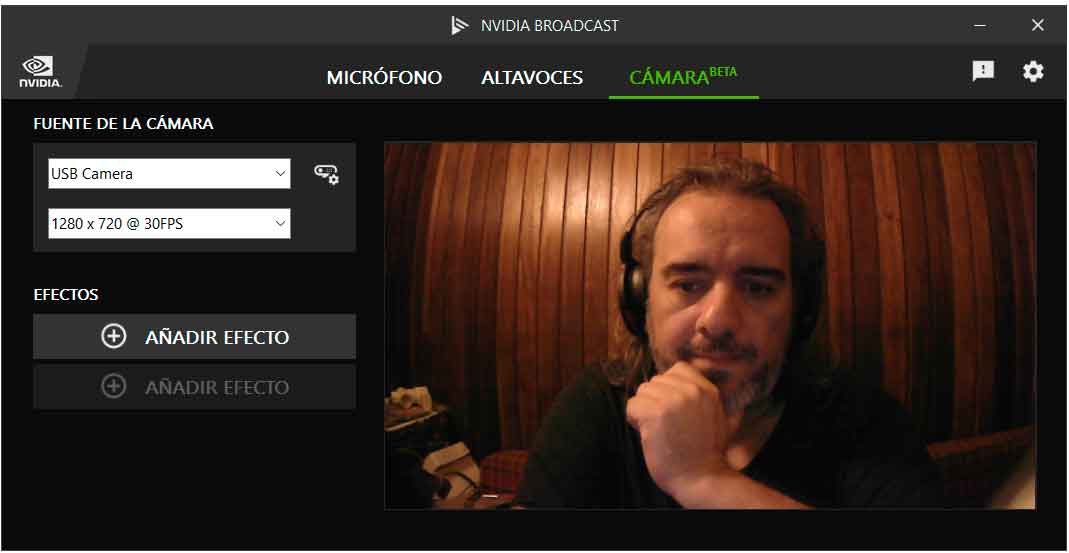
An important detail, however, is that NVIDIA Broadcast may not select the highest image quality by default. For example, in this case it has been set to 720p (1280 x 720 points) at 30 frames per second, even though the webcam I’m using supports 1080p. Remember, therefore, to review this section, to choose the quality you want. Additionally, a settings icon is displayed to the right of the source selector. Click on it and you can use the window that will open to fine-tune the image quality.
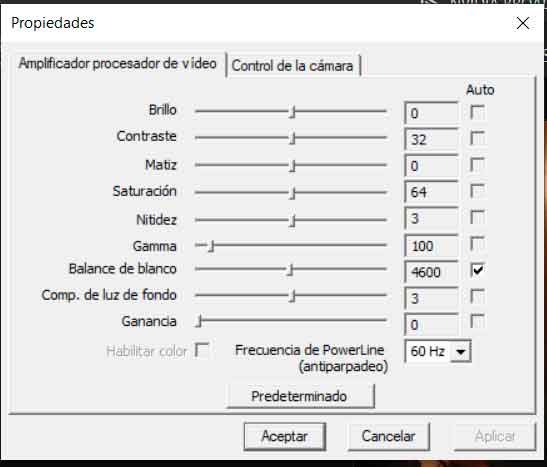
Once the sources are adjusted, it’s time to configure the effects. As we told you a few weeks ago, version 1.3 of NVIDIA Broadcast has substantially improved its performance, consuming fewer resources to apply them, so you can use them without penalizing your PC’s performance. To apply the first, click on the Apply effect button that is displayed under the camera selector, and use the section that will be displayed to choose one of them. This is the list of those included:
- background blur
- Substitution of background
- Background Removal
- automatic framing
- Video noise removal
Depending on the one you choose, you will be able to make one or another adjustment and, as you may have deduced, there are some that are incompatible with each other, specifically the three that modify the background, either by blurring it, replacing it or simply eliminating it. Of course, even if you select an effect, it will not be applied until you press the switch that is shown to its right. Once this is done, you will be able to check its effect in real time:
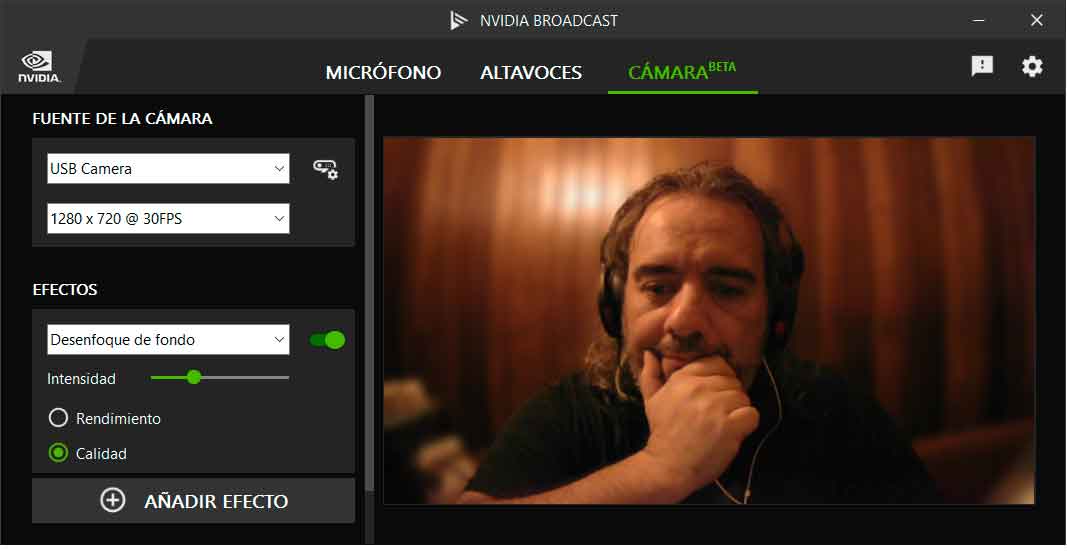
With sound capture you can also use effects to improve its quality. These are the ones available:
- Noise removal.
- Elimination of room echo.
With them, you will be able to process the signal captured by the microphone to substantially improve its quality.
From NVIDIA Broadcast to OBS Studio
With everything set to NVIDIA Broadcast, note that you will need to reconfigure the video and audio sources in OBS Studio. And it is that now it will be this application, and not the devices themselves, that will serve the already processed content. Therefore, if you keep the above settings, when you open OBS you will not be able to see the effects being applied by the NVIDIA software.
Chances are you already have the fonts you’ve used so far set up, for example:
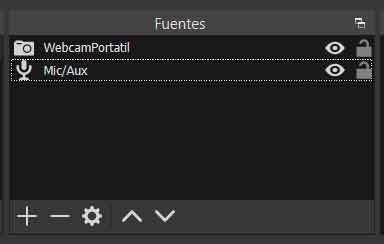
So the first thing you will have to do is remove them. To do this, choose one of them, press the – symbol at the bottom and confirm the deletion. Then do the same with the remaining one, if you had one for video and one for audio. The next thing, you will have already imagined it, is to press the + symbol and, in the menu that will appear, choose Video capture device. In the window that will then appear, choose Create new, write “NVIDIA Broadcast” in the lower box and confirm by clicking the OK button.
In the properties window that will then open, locate the Device section and select the Camera (NVIDIA Broadcast) entry. Then, go to the bottom of it, check the Use custom audio device entry, and in the Audio device section that will appear at that moment, select the Microphone (NVIDIA Broadcast) entry. To confirm the settings, click the OK button.
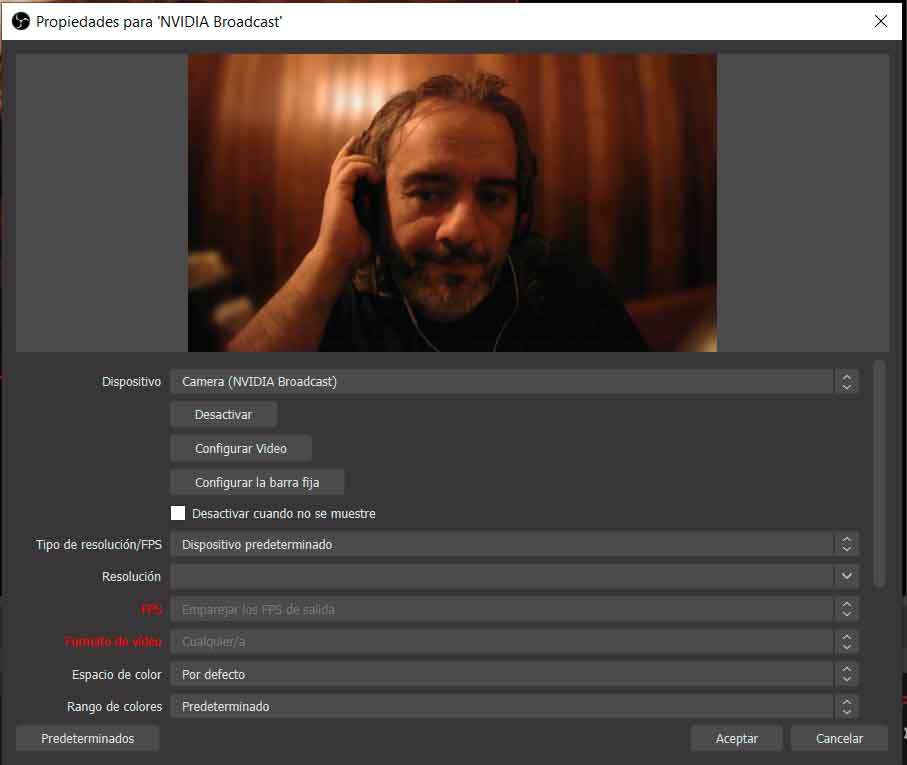
Now all you have to do is adjust the size and position of the camera image in the OBS Studio layout and, as you can see, all the effects applied by NVIDIA Broadcast will already be applied to the program’s output.
In this tutorial we have told you how to make this adjustment for OBS Studio, but in reality the procedure will be very similar with practically any other application, with the difference, yes, that in many cases you will not have as many configuration adjustments, and that in addition you will have to select separately the video and audio sources, which in both cases will be NVIDIA Broadcast.
Did you enjoy reading this article? If you did, help to spread this article by simple leaving a like or a share to any social media network of your choice. Thanks for stopping by we appreciate your visit.





